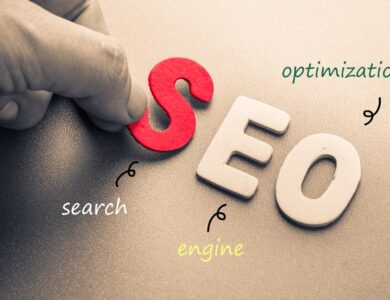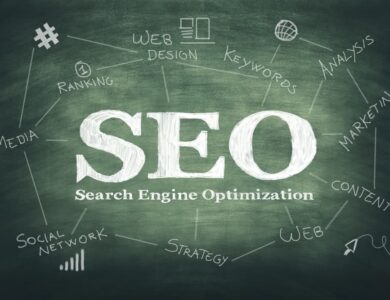
Did you know that Search Engine Optimization (SEO) can significantly impact the success of your digital marketing efforts? In today’s competitive online landscape, having a strong SEO strategy is crucial for businesses looking to increase their visibility and reach their target audience effectively.
In this article, we will explore the advantages and disadvantages of SEO in digital marketing, and We’ll discover the benefits of SEO, as its ability to boost organic visibility, target specific audiences, provide cost-effective marketing solutions, ensure long-term sustainability, enhance brand credibility, and improve user experience. However, we’ll also shed light on the potential drawbacks, including the time-consuming nature of SEO, the challenges posed by evolving search engine algorithms, the limited control over search engines, the technical complexities involved, and the risk of engaging in unethical practices.
By understanding the Advantages and disadvantages of SEO in digital marketing, you can make informed decisions about incorporating it into your digital marketing strategy.
So, let’s dive in and explore how SEO can help your business thrive in the ever-evolving online world.
top 15 Advantages of SEO in Digital Marketing

1. Increased Organic Visibility
- Higher Search Engine Rankings: SEO optimizes your website to rank higher in search engine results pages (SERPs), leading to increased visibility and exposure.
- More Website Traffic: Improved rankings attract more organic traffic as users are more likely to click on websites appearing at the top of search results.
- Improved Brand Exposure: A strong SEO strategy enhances brand visibility, ensuring your target audience becomes more familiar with your brand.
this, is the first Advantage in our article of Advantages and disadvantages of SEO in digital marketing.
2. Cost-effectiveness
- Long-term Investment: SEO provides long-lasting results, making it a cost-effective marketing approach compared to paid advertising.
- Lower Advertising Costs: With SEO, you can reduce advertising costs as you rely on organic search results rather than paid campaigns.
- Targeted Audience Reach: SEO enables you to target specific keywords and optimize your website to reach the right audience, resulting in improved conversion rates.
this, is the second Advantage in our article of Advantages and disadvantages of SEO in digital marketing.
3. Enhanced User Experience
- Faster Website Loading Times: SEO emphasizes optimizing website performance, leading to faster loading times and a better user experience.
- Mobile Optimization: SEO ensures that your website is mobile-friendly, providing a seamless browsing experience for users on smartphones and tablets.
- Improved Website Navigation: SEO focuses on organizing and structuring your website, making it easier for users to navigate and find relevant information.
this, is the third Advantage in our article of Advantages and disadvantages of SEO in digital marketing.
4. Credibility and Trust
- Higher Authority and Expertise: SEO helps establish your website as an authoritative source in your industry, increasing credibility and trust.
- Positive User Perception: Higher search rankings create a positive perception among users, indicating that your website is reputable and trustworthy.
- Increased Customer Trust: When your website appears prominently in search results, users are more likely to trust your brand, leading to increased customer trust and loyalty.
this, is the forth Advantage in our article of Advantages and disadvantages of SEO in digital marketing.
5. Long-term Sustainability
- Lasting Results: SEO efforts, such as quality content creation and link building, can generate long-term results even after the initial optimization.
- Ongoing Optimization and Maintenance: SEO requires continuous monitoring and optimization to adapt to changing algorithms and maintain high rankings.
- Adaptability to Algorithm Changes: SEO strategies can be adjusted to align with algorithm updates, ensuring your website remains visible and relevant.
this, is the fifth Advantage in our article of Advantages and disadvantages of SEO in digital marketing.
6. Competitive Edge
- Outranking Competitors: SEO allows you to outrank your competitors in search results, increasing your brand’s visibility and market share.
- Increased Market Share: Higher rankings attract more organic traffic, leading to an increased market share and potential customer base.
- Brand Differentiation: SEO helps highlight your unique selling points and brand messaging, differentiating your brand from competitors.
this, is the sixth Advantage in our article of Advantages and disadvantages of SEO in digital marketing.
7. Targeted Traffic and Qualified Leads
- Relevant Keyword Targeting: SEO enables you to target specific keywords that align with your target audience’s search intent, attracting highly relevant traffic.
- Qualified Lead Generation: By optimizing your website for targeted keywords, you can attract visitors who are actively searching for products or services like yours, increasing the likelihood of generating qualified leads.
this, is the seventh Advantage in our article of Advantages and disadvantages of SEO in digital marketing.
8. Measurable Results and Analytics
- Website Analytics: SEO allows you to track and measure various metrics such as website traffic, conversions, bounce rate, and keyword rankings, providing valuable insights into your digital marketing performance.
- Data-driven Decision Making: SEO analytics enables data-driven decision making, allowing you to refine your strategies based on performance data and optimize your digital marketing efforts effectively.
this is the eighth Advantage in our article of Advantages and disadvantages of SEO in digital marketing.
9. Integration with Other Digital Marketing Channels
- Synergy with Content Marketing: SEO and content marketing work hand in hand, as optimized content attracts organic traffic and amplifies the effectiveness of your overall marketing efforts.
- Social Media Amplification: SEO-optimized content is more likely to be shared on social media platforms, increasing brand visibility and driving social engagement.
- Pay-per-Click (PPC) Support: SEO and PPC can complement each other by optimizing landing pages, improving quality scores, and reducing advertising costs.
this, is the ninth Advantage in our article of Advantages and disadvantages of SEO in digital marketing.
10. Geographic Targeting
- Local SEO: For businesses targeting specific geographic locations, local SEO helps optimize your online presence to attract local customers and increase foot traffic to physical stores.
- Global Reach: SEO allows businesses to expand their reach globally by optimizing their website for international search engines and targeting international markets.
this, is the tenth Advantage in our article of Advantages and disadvantages of SEO in digital marketing.
11. Brand Authority and Thought Leadership
- Content Optimization: SEO involves optimizing your website’s content to provide valuable and informative resources, positioning your brand as an authority in your industry.
- Thought Leadership Recognition: By consistently producing high-quality, optimized content, your brand can gain recognition as a thought leader, attracting industry experts and media attention.
12. Enhanced User Engagement
- Lower Bounce Rates: SEO-optimized websites provide relevant and valuable content, reducing bounce rates and increasing user engagement.
- Increased Pageviews and Time-on-Site: Engaging and optimized content encourages users to explore your website further, resulting in increased pageviews and longer average time spent on your site.
13. Brand Visibility across Multiple Platforms
SEO involves strategies to boost website visibility, including prominent SERP placement, optimizing online directories, and adapting to voice search, all to enhance brand visibility across search platforms.
14. Enhanced Social Media Presence
SEO-optimized content not only boosts social sharing, extending brand visibility, but also enhances social signals like likes and shares, which are crucial for search engines in determining content relevance and quality, thus impacting search rankings positively.
15. Higher Return on Investment (ROI)
SEO drives increased conversions by targeting relevant traffic and enhancing user experience, ultimately yielding higher conversion rates and improved ROI. Moreover, its emphasis on organic traffic translates to lower customer acquisition costs compared to paid advertising, further bolstering ROI.
Disadvantages of SEO in Digital Marketing
| 1. Time-consuming and continuous effort: SEO requires extensive research, optimization, and ongoing monitoring and adjustments. Results may take time to materialize. |
| 2. Uncertainty and intense competition: Frequent algorithm updates and changes make SEO strategies unpredictable. It is challenging to outrank established websites and competitors with their optimization strategies. |
| 3. Limited control over search engines: Search engine algorithms evolve, leading to fluctuations in rankings. Website owners have minimal control over how search engines rank their sites. Violating guidelines can result in penalties. |
| 4. Technical complexities: Successful SEO implementation demands technical knowledge and expertise. Website optimization can be challenging, requiring continuous learning and adaptation to keep up with evolving best practices. |
| 5. Potential for unethical practices: Some practitioners employ black hat SEO techniques, such as keyword stuffing or link schemes, risking penalties and damage to the website’s reputation. Ethical and sustainable strategies are essential. |
| 6. Dependency on search engines: SEO heavily relies on search engines for organic traffic. Changes in search engine policies or algorithms can significantly impact website visibility and traffic. |
| 7. Delayed ROI: Due to the time-intensive nature of SEO, the return on investment may be delayed. Patience and a long-term perspective are necessary to see financial benefits. |
| 8. Lack of guaranteed results: Despite careful planning and implementation, there is no guarantee of achieving high rankings or increased organic traffic. SEO outcomes can vary. |
| 9. Resource and expertise requirements: Effective SEO implementation often demands technical knowledge, time, and resources. Hiring or consulting with experts may be necessary. |
| 10. Constant monitoring and adaptation: SEO requires continuous monitoring, analysis, and adjustment to adapt to algorithm changes and maintain rankings. |
FAQ For Advantages and disadvantages of SEO in digital marketing
1. What are the advantages of SEO in digital marketing?
SEO offers several benefits in digital marketing, including:
- Increased organic visibility and website traffic.
- Targeted audience reach based on relevant keywords.
- Cost-effective compared to paid advertising.
- Long-term sustainability and continuous returns.
- Enhanced brand credibility and trust.
- Better user experience and website usability.
- Competitive advantage over businesses without SEO.
2. Are there any risks associated with SEO?
Yes, there are risks associated with SEO, particularly when engaging in unethical practices or violating search engine guidelines.
These risks include:
- Penalties, such as getting deindexed or receiving lower rankings.
- Reputation damage and loss of trust.
- Wasted time and resources on ineffective strategies.
- Negative impact on user experience and website usability.
3. How long does it take to see results from SEO efforts?
The timeline for seeing results from SEO efforts can vary. It typically takes several months to start seeing noticeable improvements in rankings and organic traffic.
However, achieving significant results may take longer, depending on factors such as website authority, competition, and the extent of optimization.
4. Can SEO guarantee top rankings on search engines?
No, SEO cannot guarantee top rankings on search engines. Search engine algorithms consider numerous factors when determining rankings, and these algorithms are proprietary and constantly evolving. While SEO can improve rankings, achieving and maintaining top positions is not guaranteed.
5. What are some common SEO mistakes to avoid?
Common SEO mistakes to avoid include:
- Keyword stuffing and over-optimization.
- Ignoring quality content and focusing solely on rankings.
- Neglecting technical SEO aspects, such as site speed and mobile optimization.
- Engaging in black hat SEO techniques, such as buying links or cloaking.
- Failing to adapt to algorithm updates and industry best practices.
6. How can I measure the success of my SEO campaign?
To gauge the effectiveness of an SEO campaign, key performance indicators (KPIs) include monitoring organic traffic quantity and quality, tracking keyword rankings, assessing conversion rates, analyzing engagement metrics like bounce rate and click-through rates, and calculating return on investment (ROI) to measure the financial impact of SEO efforts.
7. Is SEO suitable for all types of businesses?
While SEO can benefit most businesses, its suitability may vary depending on factors such as industry, target audience, competition, and marketing goals. Local businesses, e-commerce sites, service providers, and content-driven websites can all benefit from SEO.
However, it’s important to assess individual business needs and consider other marketing strategies in conjunction with SEO.
8. How can I stay updated with search engine algorithm changes?
- Staying updated with search engine algorithm changes can be done by:
- Following reputable SEO blogs and industry publications.
- Engaging in SEO communities and forums.
- Monitoring official search engine announcements and documentation.
- Attending conferences, webinars, and industry events.
- Continuously learning and adapting to industry best practices.
- Keeping up with algorithm changes helps you stay informed and adjust your SEO strategies accordingly.

